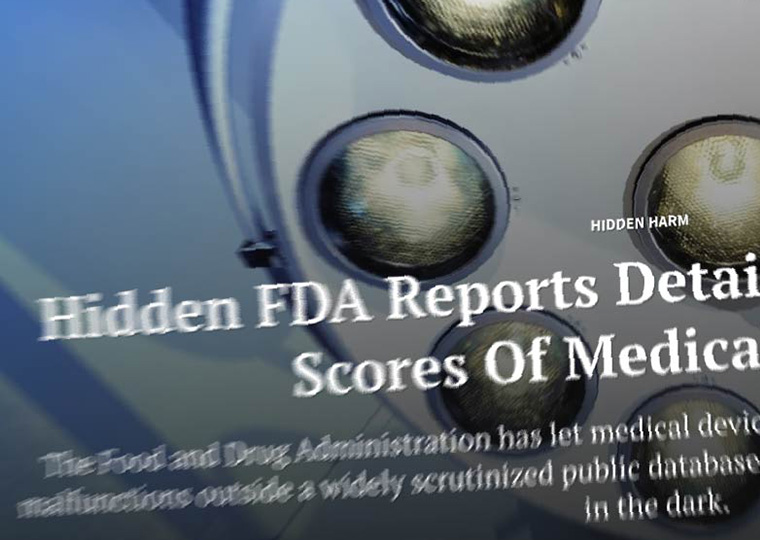It was Scarratt’s only game time of the campaign, but she says she feels that her contribution on the sidelines and around the camp was just as crucial as her more obvious involvement in four previous World Cups.
“I genuinely really enjoyed the…

It was Scarratt’s only game time of the campaign, but she says she feels that her contribution on the sidelines and around the camp was just as crucial as her more obvious involvement in four previous World Cups.
“I genuinely really enjoyed the…

The rules-based international trade system is in danger, UN chief Antonio Guterres warned Wednesday, amid spiralling debt, heavy tariffs and financial…

BOSTON – Zenocutuzumab (Bizengri), a bispecific antibody that targets human epidermal growth factor receptor 2 (HER2) and HER3, led to responses in more than a third of patients with neuregulin 1 (NRG1)-positive cholangiocarcinoma, according to results from the phase II eNRGy clinical trial presented at the AACR-NCI-EORTC International Conference on Molecular Targets, held October 22-26.
Cholangiocarcinoma, a rare type of cancer diagnosed in about 2,000 to 3,000 people each year in the United States, originates in bile ducts, which are part of a network of tubes inside and outside the liver and which transport bile to the gallbladder and small intestine. Fewer than 1% of cholangiocarcinomas are NRG1-positive, meaning the tumors harbor NRG1 fusion proteins that activate cancer-promoting cellular processes, explained Alison Schram, MD, a medical oncologist at Memorial Sloan Kettering Cancer Center.
“NRG1-positive cholangiocarcinomas are typically aggressive. The most common first-line treatment for advanced cholangiocarcinoma is chemotherapy with immunotherapy, but the disease inevitably progresses,” Schram said. “NRG1-positive tumors usually lack other tumor drivers that might qualify them for approved targeted therapies, and there are very few effective treatments available to these patients after first-line chemoimmunotherapy stops working.”
Zenocutuzumab is a bispecific antibody that targets both HER2 and HER3, which are proteins on the cell surface that regulate cell growth. NRG1 fusion proteins bind to HER3, inducing structural changes to HER3 that facilitate HER2-HER3 complex formation, which activates downstream growth signaling. By targeting both HER2 and HER3, zenocutuzumab is designed to block the formation of the growth-promoting HER2-HER3 complex, as well as the interaction between HER3 and NRG1 that promotes the formation of this complex.
To evaluate the clinical efficacy of zenocutuzumab, Schram and colleagues are participating in the international, phase II eNRGy trial, which has enrolled patients with various NRG1-positive solid tumors. Earlier results from the trial supported the U.S. Food and Drug Administration (FDA) approval of zenocutuzumab in 2024 to treat certain NRG1-positive lung and pancreatic cancers.
The eNRGy trial enrolled 22 patients with advanced, NRG1-positive cholangiocarcinoma who had received or were ineligible for prior treatment. The median age of these patients was 57 years, and 91% of patients had received prior systemic therapy.
Here, Schram presented results from 19 patients with NRG1-positive cholangiocarcinoma who were included in the efficacy analyses. After a median follow-up time of 15.2 months, seven of these patients had experienced a partial response to zenocutuzumab, for an overall response rate of 37%. Responses lasted a median of 7.4 months, the median progression-free survival was 9.2 months, and median overall survival had not been reached at the time of data cutoff.
Among 16 patients whose blood concentration of the cancer antigen 19-9 (CA19-9, a cancer biomarker for cholangiocarcinoma) was measured before and after treatment, all 16 experienced declines in CA19-9 levels, including 11 patients who experienced declines of at least 50%.
Declines in cancer biomarkers, such as CA19-9, serve as useful adjuncts to support the anticancer activity of the therapy, Schram noted.
Most adverse events were grade 1 or 2. The most common grade 3 or 4 adverse events were anemia, low levels of magnesium, and increased levels of gamma-glutamyl transferase.
“These data suggest that the benefit of zenocutuzumab extends beyond the FDA-approved indications of lung and pancreatic cancer to cholangiocarcinoma,” said Schram. “Zenocutuzumab is a potential new treatment for patients with NRG1-positive cholangiocarcinoma, which is a patient population that has significant unmet need.”
A limitation of the study was the small sample size. However, Schram noted, “It is challenging to conduct clinical trials for rare cancer types and for tumors driven by rare genomic alterations like NRG1 fusions, but it is not sufficient to extrapolate from tumors with different molecular characteristics. It is increasingly evident that tumors driven by rare genomic alterations have distinct biology and respond differently to standard therapies.”
The study was supported by Merus and Partner Therapeutics. Schram has served on the advisory boards of Relay Therapeutics, Mersana Therapeutics, Merus, Partner Therapeutics, PMV Pharma, Schrodinger, Repare Therapeutics, Revolution Medicines, Endeavor BioMedicines, Day One Biopharmaceuticals, TransCode Therapeutics, and Guardant Health; has consulted for Blueprint Bio, Flagship Pioneering, Redona Therapeutics, Pro Clinical Solutions, and Guidepoint; has served on steering committees for Merus, Pfizer, and Relay Therapeutics; has had speaking roles for Ovarian Cancer Research Alliance and STOP Cancer; has received research funding to her institution from AstraZeneca, ArQule/Merck, BeiGene/SpringWorks, Black Diamond Therapeutics, Boehringer Ingelheim, Elevation Oncology/Concentra Biosciences, Kura Oncology, Lilly, Merus, Northern Biologics, Partner Therapeutics, Pfizer, Pheon Therapeutics, PMV Pharma, Relay Therapeutics, Repare Therapeutics, Revolution Medicines, and Surface Oncology/Coherus Oncology; has received food and beverage from Puma Biotechnology, Repare Therapeutics, and Boehringer Ingelheim; and continuing medical education from WebMD.
Download a photo Schram

Mohamed Salah is among 10 footballers nominated at the CAF Awards 2025 for the men’s Player of the Year award.
The Egyptian national team captain is up for the top award at the African football awards ceremony, which will be held on an…

A24’s $104 million grossing romance movie, The Materialists, is debuting on HBO Max on Nov. 7 with a linear premiere of Saturday, Nov. 8, 8PM EST.
In the Celine Song directed and written feature, Dakota Johnson plays a young,…

In 2019, a KFF Health News investigation reported that the Food and Drug Administration had for some 20 years allowed medical device makers to report adverse events — from minor to fatal — on certain products to a database that wasn’t public and that few people even knew existed.
This secret system, known as Alternative Summary Reporting, or ASR, grew to 6 million reports of adverse events alongside continuing operation of the FDA’s public database for such bad news, Manufacturer and User Facility Device Experience, known as MAUDE.
Once KFF Health News revealed its existence, the FDA terminated the secret filing system and made public the entire ASR database, filling in what had been very patchy disclosure of some medical device problems. Filings to ASR had represented about two-thirds of all reported malfunctions and injuries involving approved medical devices between 1997 and 2019.
In a working paper, University of Utah’s Colleen Cunningham and UCLA Anderson’s Jennifer Kao assess how this sudden and massive increase in transparency affected innovation in the medical device industry. Cunningham and Kao study two mechanisms at work as the industry came to grips with actual disclosure:
The transparency altered the quantity and quality of innovation efforts. After the release, the number of applications for new devices fell about 19% in product markets that had at least one incident reported through ASR, Cunningham and Kao report. This occurred across about 100 product categories, including pacemaker electrodes, various catheters, surgical staplers and popular types of breast prostheses.
The quality and safety of new medical devices, meanwhile, got better. Device applications that were submitted in the years following the release typically included stronger safety features and larger technological advancements, the authors show.
The numerical decline is mainly due to manufacturers pivoting away from newly scrutinized product categories, according to Cunningham and Kao’s analysis. The decisions appear driven by the revelations that competitors were having issues with specific products, rather than embarrassment or liability fears surrounding negative exposure around their own devices, the study suggests. With an understanding of more than just their own device problems, firms appeared to reassess potential market risks of the problematic devices, and redeployed research and development funds to other products.
At the same time, product introductions appeared to be different after the data release. New players may have been surprised by all of the adverse events that came to light with the FDA’s disclosure. As incumbents withdrew, these newcomers faced less competition and could use the new data to inform their product development decisions. After some years, these new entrants introduced safer, higher quality devices to fill the void.
The data dump also appeared to affect development of products that were technologically similar to, but not a part of, the disclosure, the study finds. (These products have “predicate relationships,” in FDA terms. They may, for example, use similar components.) Cunningham and Kao found reduced research and development funding in this category after the data release.

Idiopathic MH is distinguished by a full-thickness defect with the…

The International Court of Justice (ICJ) has said Israel is obliged to facilitate the delivery of humanitarian aid to the Gaza Strip by the United Nations and its entities to ensure the basic needs of the Palestinian civilians are met.
An advisory…

Welcome to Eye on Arkesia, where we’ll take a look ahead at all things Lost Ark coming your way. This time around we’re covering the October update, Fog of Diaspero, which will release on October 29, plus our response to player feedback on…